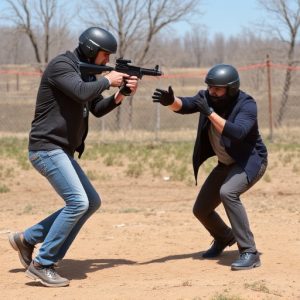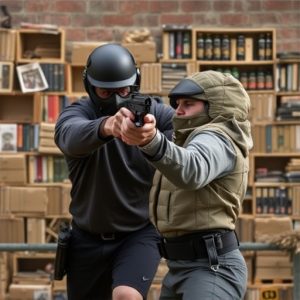Unveiling the Science: Most Concealable Stun Gun Design Secrets
Understanding voltage penetration is crucial for evaluating self-defense tools like stun guns, espec…….
Understanding voltage penetration is crucial for evaluating self-defense tools like stun guns, especially advanced, concealable designs. These tools employ specialized prongs and advanced circuitry to enhance power delivery through clothing barriers. The most concealable stun guns mimic everyday objects, featuring compact sizes and smart chip-controlled pulses for strong shocks within legal limits. Fabric choice is vital: synthetic materials like polyester and nylon provide superior electrical protection. High-density fabrics with conductive elements offer the best shielding. This innovative design balances subtlety and performance, ensuring user safety without sacrificing aesthetics or comfort.
Voltage penetration through thick clothing is a critical factor in personal safety, especially with the increasing popularity of concealed self-defense tools. This article explores the science behind voltage penetration, delving into factors affecting its efficiency and the design principles of the most concealable stun guns. We analyze various materials’ effectiveness at blocking electrical current and highlight key features for optimal effectiveness, providing insights into enhancing personal protection discreetly.
- Understanding Voltage Penetration: Factors Affecting Efficiency
- The Science Behind Stun Gun Design: Maximizing Concealment and Impact
- Exploring Materials: Which Fabrics Are Most Effective at Blocking Electrical Current?
- Creating the Ultimate Concealable Stun Gun: Features for Optimal Effectiveness
Understanding Voltage Penetration: Factors Affecting Efficiency
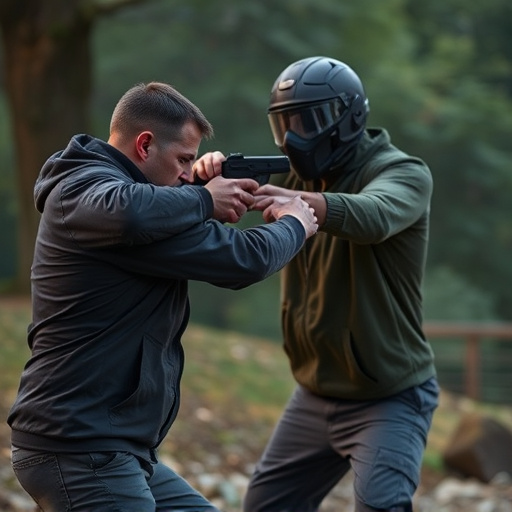
Understanding Voltage Penetration: Factors Affecting Efficiency
The concept of voltage penetration through thick clothing is crucial, especially when considering self-defense tools like stun guns. It’s important to know that not all stun gun designs are created equal in terms of their ability to deliver a shock through various materials. The efficiency of voltage transmission is influenced by several factors, including the thickness and type of fabric, as well as the power output of the device. In the case of the most concealable stun gun design, these factors become even more critical.
Thicker garments, such as heavy coats or denim jeans, can significantly reduce the effectiveness of a stun gun’s current. The material acts as an insulator, hindering the flow of electricity. Additionally, the type of fabric plays a role; some materials conduct electric current better than others. For instance, while leather and cotton might offer more resistance, synthetic fabrics are often more conductive, potentially allowing for better penetration. Concealable stun guns designed with these variables in mind may incorporate advanced circuitry or specialized prongs to enhance their ability to penetrate clothing, ensuring a more reliable shock delivery.
The Science Behind Stun Gun Design: Maximizing Concealment and Impact
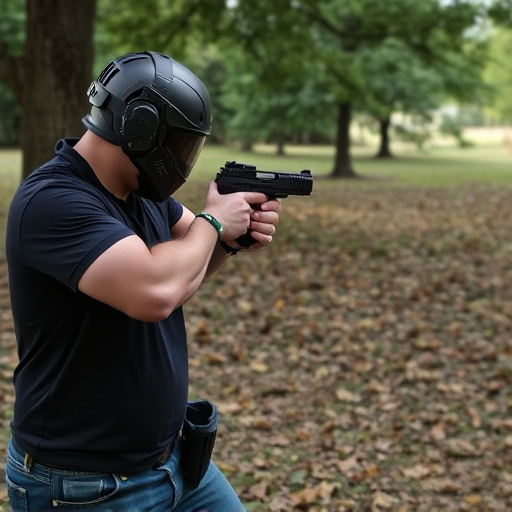
The design of a stun gun is a delicate balance between two seemingly contradicting factors: maximizing concealment and delivering a powerful impact. In today’s world, where personal safety is a top priority, developers focus on creating weapons that are not only effective but also easy to hide. The most concealable stun gun design often incorporates compact dimensions, smooth contours, and materials that blend seamlessly with the human body or common items like keys or wallets. These features allow users to carry their self-defense tools discreetly without drawing unnecessary attention.
To ensure maximum impact, these stun guns utilize advanced technology such as high voltage output and smart chip-controlled pulses. This combination ensures a strong electric shock that can incapacitate an assailant while maintaining user safety by minimizing the risk of severe harm. The science behind this design involves precise calculations of current flow and energy distribution, ensuring both effectiveness and compliance with legal guidelines regarding stun device power levels.
Exploring Materials: Which Fabrics Are Most Effective at Blocking Electrical Current?
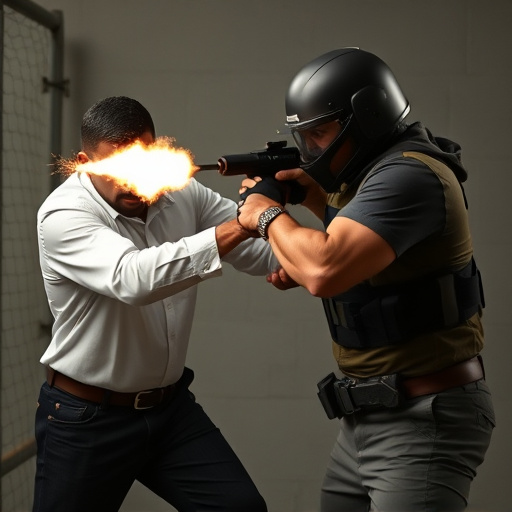
When considering the effectiveness of materials in blocking electrical current, particularly for concealing a stun gun, fabric choices play a pivotal role. The key lies in understanding how different fabrics conduct or impede the flow of electricity. Natural fibers like cotton and wool are generally poor conductors due to their organic composition, making them less effective at stopping voltage penetration. On the other hand, synthetic materials such as polyester and nylon have superior electrical conductivity, offering more protection against stun gun shocks.
Amongst these, high-density fabrics with tightly woven threads create a robust barrier against electrical currents. Some specialized textiles even incorporate conductive elements or carbon fibers to enhance their shielding capabilities. These advanced materials are particularly intriguing for designing the most concealable stun gun outfits, ensuring users’ safety without compromising on aesthetics or comfort.
Creating the Ultimate Concealable Stun Gun: Features for Optimal Effectiveness

In the pursuit of creating a truly effective yet discreet self-defense tool, the development of the ultimate concealable stun gun is a game-changer. This compact and sophisticated device aims to revolutionize personal safety by combining power with subtlety. The most concealable stun gun design should prioritize minimalism without sacrificing performance, ensuring it can be easily hidden under clothing or in accessible pockets. A sleek profile, slim dimensions, and a non-intrusive form factor are key elements to achieve this goal.
Features such as adjustable voltage settings allow users to tailor the impact to specific threats while minimizing collateral damage. Advanced circuitry and high-capacity batteries contribute to extended usage without frequent recharging or replacement. Additionally, innovative activation mechanisms, like rapid-fire capabilities or motion-sensor triggers, can provide an extra layer of protection when hidden under clothing. These integrated features not only enhance effectiveness but also discreetness, making the stun gun a reliable option for those seeking ultimate peace of mind in various environments.
In conclusion, understanding voltage penetration through thick clothing is crucial for developing effective and safe personal defense tools. By exploring the science behind stun gun design, the materials that block electrical current, and integrating key features into the ultimate concealable stun gun, users can ensure they have a reliable device for self-protection. When it comes to creating the most concealable stun gun design, prioritizing both effectiveness and discretion is essential for those seeking peace of mind in potentially dangerous situations.
